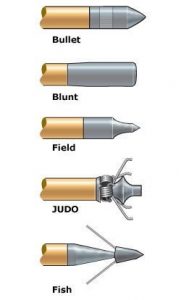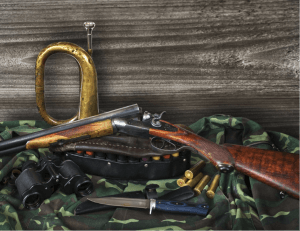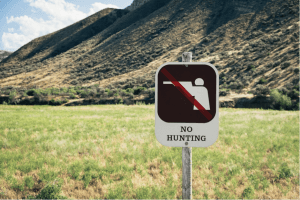
This is a guest post, I don’t agree that a bow is anywhere close to being the most effective self defense weapon, but in the spirit that people who don’t/can’t own firearms still need self defense tools I am posting it. Besides I still get comments on my video discussing why I don’t like the .410 Judge for a self defense gun.
Archery for home defense…hmmm… you think this is the silliest thing you’ve ever heard?
Let me give you a story:
In 1997, a tale was given of how Claude Gates successfully defends his shop against intruders with only a crossbow. He ordered the burglar to stop, but he refused to, prompting Mr. Gates to fire two shots at him. One of the bolts struck him on the side while the other hit his leg. Mr. Gates was hesitant to acquire a firearm in fear of it being used against him in the heat of the battle. The victim and was arrested!
More such incidents of people using the bow and arrow to defend themselves have been documented, making it clear that archery-based weapons are effective at defending yourself from a physical threat (when in the hands of the right person).
When put on a comparison table with a firearm, the most trusted self-defense weapon by man, archery for self-defense shows a number of benefits that I’ll be discussing with you in a few moments…
Advantages of Home Defense Bow
Portability
One of the things you’ll get to like about using home defense bow is the portability it gives you.
Take for instance the highly efficient takedown bow; it comes in three pieces – middle grip section and two limbs – which you can easily separate by twisting a few lug screws and bam! It becomes extremely portable, unlike most of the home defense options.
You can quickly stash the bag in your bug out bag for easy carry. Plus, it’s incredibly lightweight, adding to its portability.
Versatility
Modern bows have seen tremendous improvements, making them even more suitable for the self-defense task.
Most of the new carbon fiber arrows you’ll get on the market today come with a handy tip that works with a variety of screws in your arrow tips.
This means you’ll have an extensive selection of tips to pick from, from the standard practice tips, small games tips, broad head tips, hook tip, and so much more.
Home Defense Bows Works Silently
When in a self-defense situation, you’d need the convenience of a silent and deadly weapon.
Lucky for you, the bow and arrow makes an ultra-quiet but deadly weapon.
Imagine a scenario where you’re camping in a national forest, and you find yourself under attack in the middle of the night. If you’d just place yourself in a dark corner (where you can easily observe them) with your arrow docked on your bow, the attackers ill have a really hard time telling your exact location.
This will be a huge plus for you, as you’ll have an easy time taking them down, one by one.
Affordability
We’re living in hard economic times. That being said, you’d want to look for an effective self-defense weapon that does not cost you a fortune.
Despite their effectiveness, the bows come with pocket-friendly prices which make them affordable for all, including those on a tight budget.
Besides the bow, the ammunition (arrows) is also cost effective. Once you’ve fully cultivated your archery skills, you’ll find it easy to retrieve all your arrows after making shots and reuse them again and again.
Even better, you can practice making your own bow using readily available materials – like wooden dowels plant shafts, or even the natural found wood.
Legal Limitations
You’ll agree with me when I say the legal restrictions tend to be less strict on bows and arrows than with the guns and bullets.
With this in mind, you’ll enjoy the freedom of using an equally deadly weapon without having to deal with any permits and paperwork.
And the less you have to deal with all this paperwork, the better – particularly when things become messy.
The only (Main) downsides associated with using archery for self-defense:
- You’ll need to undergo some intense practice to master archery skills for efficient shooting
- The arrows might become a bit cumbersome to pack sometimes.
Powerful Tips To Get The Most Out of Your Home Defense Bow
Know the capabilities and limitations of your weapon.
For instance, the crossbows – the most popular home defense bows – come with different levels of strength.
The higher the power of your crossbow, the harder it might become to pull the string. A 50lb model will be the easiest to pull back as it comes with the least strength; the 150lb models have superior shooting power but will take time and energy to load.
Practice shooting with your bow regularly.
If you buy your home defense bow and keep in your basement, only to retrieve it when intruders come to your home, it might not offer you much help.
An experienced archer knows the importance of regular practicing with their equipment; it keeps them fully prepared to face any attack that comes their way.
Also, you’d want to consider investing in additional accessories, like a drop away arrow rest. They give you a better archery experience.
Use the Home Field Advantage
When under attack, always remember to use the familiarity of your home surroundings to your advantage.
No intruder knows your property more than you do. Exploiting this advantage in your strategy will give you an advantage over any intruder!
Always have a backup weapon.
Although it’s relatively rare, your bow might fail when you’re in the midst of an attack. To prevent such unfortunate incidents, I’d advise you to carry a backup weapon, pepper spray.
Having empty hand combat skills will also be a significant advantage. Know how to kick, throw a punch, escape common holds, and the pressure points. If you’ve already to shoot the intruder and it hasn’t weakened them, try exploiting their wound to your advantage in close range combat.
Know the laws of your region.
Despite the lax laws on archery weapons, some states don’t allow folks to use them.
They consider a bow as a deadly weapon, given its ability to kill a person.
Shooting a person who hasn’t been involved in illegal activity with your bow could lead to serious legal consequences.
Get an Alarm System
Do you have an early means of warning? This could be a home security system or a dog that barks to alert when your home is under attack. This will help you arm yourself in advance as well as secure your family.
Final Thoughts
With your home defense bow, you can easily fight any attackers at your home. As with any other home defense weapon, the effectiveness of your bow will largely depend on the archer (you). With the right strategy execution and preparedness level, you can easily defend your home, business, etc.
The best part about using archery for home defense is that it’s also a hobby that helps relieve stress while increasing your “archery IQ.”
Even if no intruder enters your home in your lifetime, you’ll have enjoyed a fun, inexpensive hobby!






















